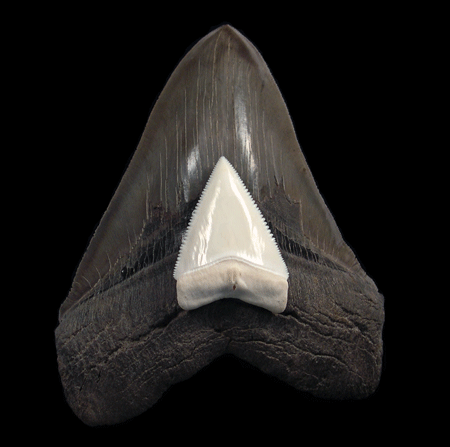
The discovery of a prehistoric behemoth’s remains stirs excitement and awe among paleontology enthusiasts and the scientific community alike. When such a find is linked to the colossal Megalodon, the extinct shark that ruled ancient seas, the event becomes nothing short of sensational. At the heart of these discoveries often lies the iconic Megalodon tooth found, symbolizing a connection to a world millions of years in our planet's tumultuous past.
Understanding the Megalodon
The Carcharocles megalodon, commonly referred to as Megalodon, was an apex predator of the prehistoric oceans. With estimations of its length reaching up to 60 feet, this marine giant's diet presumably consisted of whales and large fish, evident from the formidable size of its teeth.
Significance of Megalodon Teeth
The teeth of this colossal shark are more than just fossilized remains; they are a window into the earth’s distant past. Each serrated edge tells a story of survival and dominance within the prehistoric marine ecosystem.
Venturing into the Depths: The Hunt for the Megalodon Tooth
- Hotspots for Discovery
Coastal areas, particularly where ancient shorelines existed, often become the hotbeds for finding a Megalodon tooth. Riverbeds, ocean floors, and sediment layers are scoured by both amateur and professional paleontologists with hopes of unearthing these coveted fossils.
- Tools of the Trade
The hunt for these teeth is not merely a matter of chance. It requires an assortment of tools, from simple sifters and shovels to advanced submersible vehicles that allow access to deep-sea locations where these treasures lie hidden.
A Colossal Find: Uncovering the Past
- Examining the Discovery
When a Megalodon tooth is found, it undergoes meticulous examination. Each tooth is a unique specimen that, depending on its size, shape, and state of preservation, can provide invaluable information regarding the Megalodon's eating habits, growth patterns, and even reasons for its eventual extinction.
Chronicles Encased in Enamel
The enamel of a Megalodon tooth is often well-preserved, even after millions of years, due to its hardness and durability. These attributes make the tooth an excellent subject for radiometric dating and isotopic analysis, offering clues about the prehistoric climate and marine environment.
Preserving the Legacy: From Discovery to Display
- Fossil Preservation
Upon discovery, the conservation of a Megalodon tooth involves stabilizing the fossil to prevent further degradation. This preservation ensures that future generations can share in the wonder of these ancient relics.
Megalodon in Museums
Museums play a critical role in presenting these prehistoric finds to the public. Carefully curated displays provide insight into the life and times of the Megalodon, often stimulating curiosity and fostering a deeper appreciation for paleontology.
The Role of Buriedtreasurefossils in Megalodon Discoveries
- Resource for Enthusiasts
Emerges as a beacon for those passionate about paleontology and fossil collection. The site offers a wealth of information on finding a Megalodon tooth, detailing the nuances of locating and identifying genuine specimens.
- A Marketplace for Fossils
Beyond education, serves as a reputable marketplace, where enthusiasts can obtain their own piece of prehistoric marvel. Each Megalodon tooth found through the platform is a certified treasure, ensuring collectors acquire authentic and legally sourced fossils.
Concluding Thoughts
The discovery of a Megalodon tooth is more than an addition to a collection; it is an intimate encounter with Earth's ancient history. The rarity of finding a Megalodon tooth coupled with the sheer fascination of the creature it once belonged to continues to captivate the imaginations of many. Each Megalodon tooth found signifies a small victory in the ongoing quest to understand the planet's prehistoric past. It's these remnants of the old world, embedded within the new, that remind us of the ever-evolving narrative of life on Earth.










